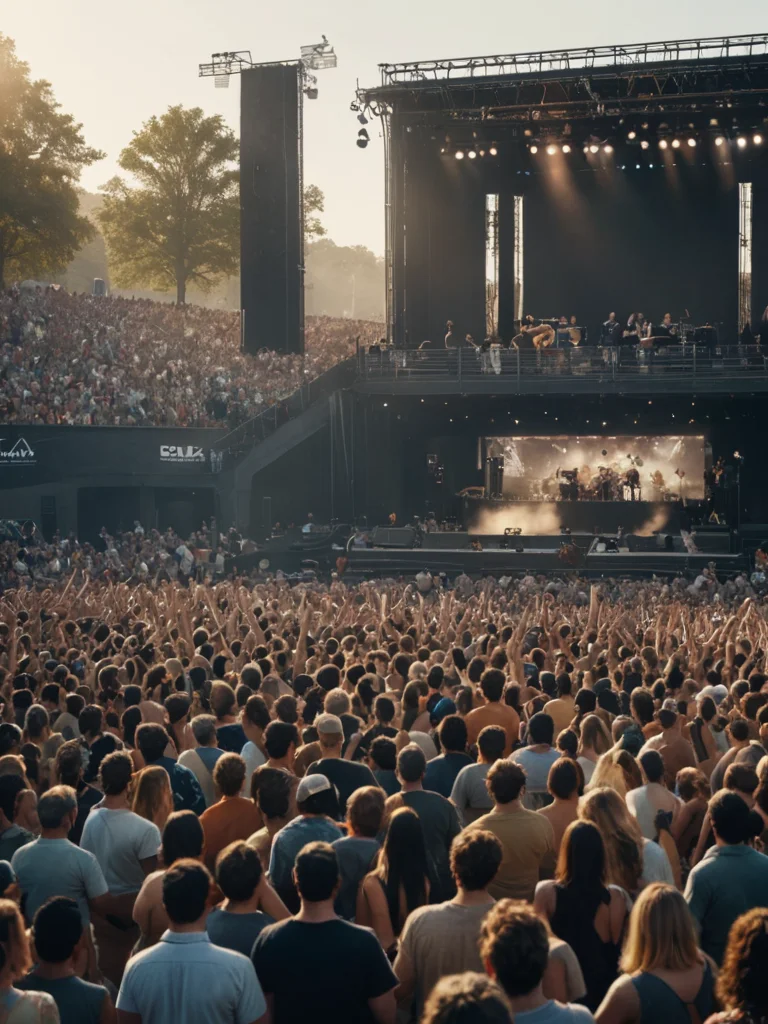Rock music, born as a rebellion against established norms, quickly became the voice of an entire generation. Its concerts and festivals transformed into something more than just musical events. They were manifestations of freedom, platforms for exchanging ideas, and unique moments of unity for people yearning for change. They reflected the spirit of the times, social and political sentiments, and undoubtedly had a profound impact on culture.
Introduction: Rock Concerts and Festivals – A Mirror of the Era: How Music United Generations and Influenced Culture
From its inception, rock music became not just a musical genre but a socio-cultural phenomenon. It united generations, served as a platform for expressing protest, and shaped public opinion. Rock concerts and festivals became an important element of this culture, offering a unique opportunity for people to unite around a shared passion for music and express their beliefs. These events became a mirror of the era, reflecting the social, political, and cultural changes occurring in society. You probably remember your parents or older siblings talking about their first rock concert as a turning point in their lives. Well, for many generations, such events truly became symbols of freedom and self-expression.
Rock festivals were more than just musical events; they represented temporary utopias where people could forget their everyday problems and enjoy music, communication, and freedom. Festivals like Woodstock became symbols of the counterculture and the peace movement, while others, like Monsters of Rock, focused on heavier and more aggressive forms of rock, attracting a different audience with different values, but still united by their love for music. They influenced fashion, art, language, and even politics, shaping the cultural landscape of entire decades. Therefore, by delving into the history of rock concerts, you are delving into the history of culture and society.
Woodstock 1969: Three Days of Peace and Music – The Story of its Creation, Key Performances, and Impact on the Counterculture
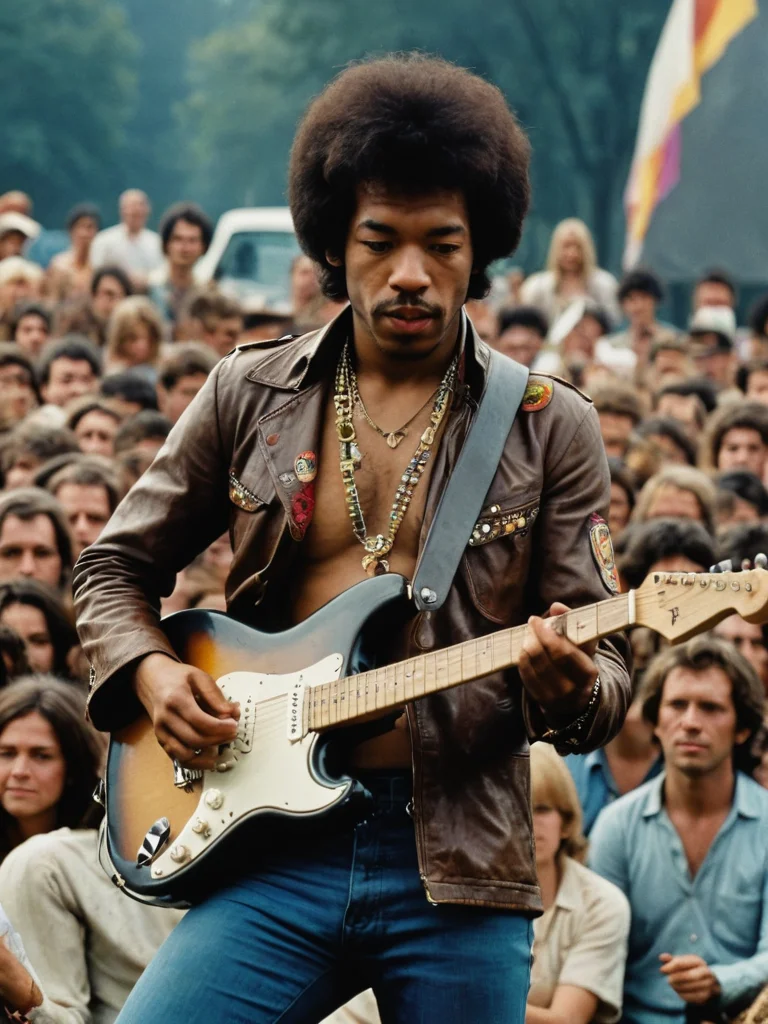
Woodstock, held in August 1969 on Max Yasgur’s farm in New York State, became perhaps the most iconic rock festival in history. Initially conceived as a commercial event, it quickly transformed into a symbol of the counterculture and the pursuit of peace and love. Faced with an enormous influx of people (estimated between 400,000 and 500,000), the organizers decided to make the festival free, which only enhanced its legendary status. Imagine how spontaneous and chaotic this event was, and at the same time, how permeated it was with the spirit of freedom and unity.
Among the key performances at Woodstock, it’s worth noting: Jimi Hendrix, who closed the festival with his epic rendition of the American anthem; Janis Joplin, whose piercing energy captivated the crowd; The Who, whose set was interrupted by an Abbie Hoffman protest; and Creedence Clearwater Revival, one of the few major names that agreed to perform without delays or issues. Each of these artists’ performances became legendary, and recordings from Woodstock are still immensely popular. Try to imagine yourself in the place of these spectators, feel the energy of the crowd, see the rock legends on stage – it was an experience that changed many lives.
Woodstock’s impact on the counterculture was immense. The festival became a symbol of a generation that opposed the Vietnam War, advocated for civil rights, and championed freedom of self-expression. It demonstrated that it was possible to create a community based on love, peace, and music, even amidst chaos and uncertainty. Woodstock inspired numerous other festivals and events that sought to recreate the atmosphere of freedom and unity. It also strengthened rock music’s position as a powerful tool for social and political protest. And to this day, when you recall Woodstock, you recall a time of hope and change, when music could change the world.
From Woodstock to Monsters of Rock: The Evolution of Rock Festivals – How Format, Sound, and Audience Changed from the 1970s to the 1990s
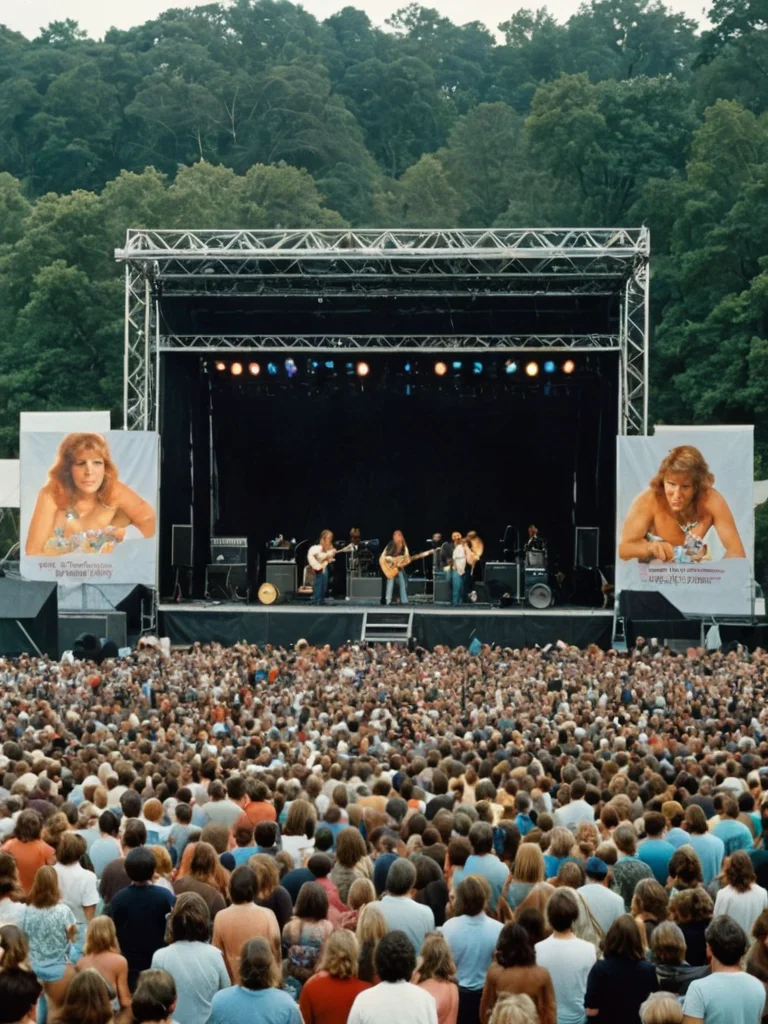
After Woodstock, the format of rock festivals began to change rapidly. The 1970s saw the emergence of many new festivals, each with its unique atmosphere and focus. Some festivals, like the Isle of Wight Festival in the UK, aimed to replicate Woodstock’s success, attracting huge crowds and star performers. Others, like Glastonbury, took on a more alternative and experimental character, offering attendees a wide spectrum of music, art, and performances. If Woodstock was a symbol of peace and love, then the festivals of the 70s became more diverse, reflecting various trends in rock music and culture.
The sound of rock music also evolved. New genres emerged, such as hard rock, heavy metal, and punk rock, which demanded a more powerful and aggressive sound. Festivals began to use more complex and powerful sound systems to meet the needs of these new genres. Technological advancements improved sound quality and made concerts more spectacular. Imagine the sound of guitar riffs filling the space, creating an atmosphere of incredible energy and drive.
The audience for rock festivals also underwent changes. While Woodstock primarily attracted counterculture adherents and youth, the festivals of the 1970s and 1980s became more diverse in terms of age, social status, and musical preferences. Festivals emerged that were focused on specific genres, such as heavy metal (e.g., Monsters of Rock), which attracted fans from all over the world. These festivals became meeting places for like-minded individuals, where people could share their passion for music and feel part of a larger community. You’ve probably noticed how people transform at rock concerts, forgetting their problems and enjoying the moment. This is the magic of rock festivals.
Monsters of Rock: The Main Stars, Scandals, and Legacy of the Festival – Rock Giants on One Stage and Stories That Shook the World
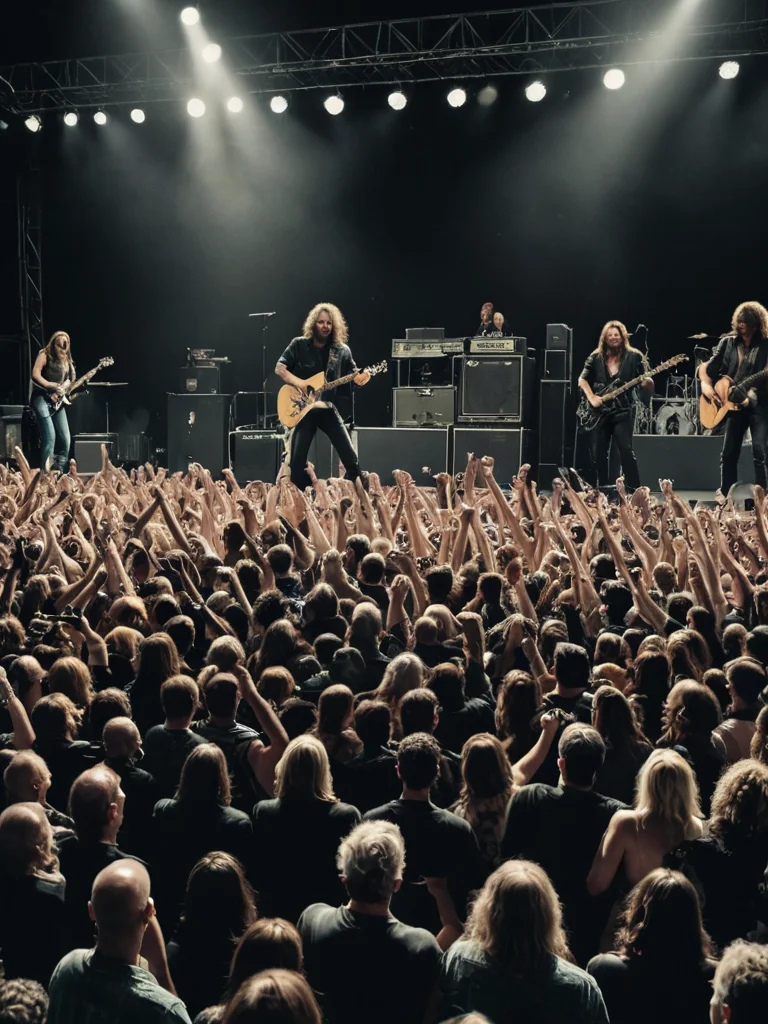
Monsters of Rock, founded in 1980 in the UK, became one of the most famous and successful hard rock and heavy metal festivals in the world. Its distinguishing feature was bringing together the biggest and most influential bands of the genre on one stage, such as AC/DC, Metallica, Iron Maiden, Guns N’ Roses, and many others. The festival quickly gained popularity and began to be held in various countries, attracting hundreds of thousands of fans. Imagine seeing your idols live, hearing their hits, and feeling the atmosphere of true rock madness – it was a dream for many.
Monsters of Rock was known not only for its star-studded lineups but also for its scandals and tragedies. In 1988, at the festival in Donington (UK), two people died in a crowd crush during a Guns N’ Roses performance. This tragic incident led to increased security measures at festivals and stricter crowd control. Despite this, Monsters of Rock continued to attract huge crowds and remained one of the most significant events in the world of rock music. You may have heard of incidents where riots occurred at rock concerts. Unfortunately, this is also part of the history of rock festivals, and organizers always strived to ensure visitor safety.
The legacy of Monsters of Rock is immense. The festival had a significant impact on the development of hard rock and heavy metal, helped many bands gain worldwide fame, and inspired numerous other festivals. It also contributed to the formation of a community of heavy music fans who felt part of something larger. Monsters of Rock became a symbol of an era when rock music was at its peak popularity and had a profound influence on culture. And today, when you hear hits by Metallica or Iron Maiden, you recall the times when Monsters of Rock filled stadiums and delivered unforgettable emotions.
Rock Festivals Today: Is the Legend Alive? – Modern Trends, Current Festivals, and the Influence of History on the Future of Rock Music
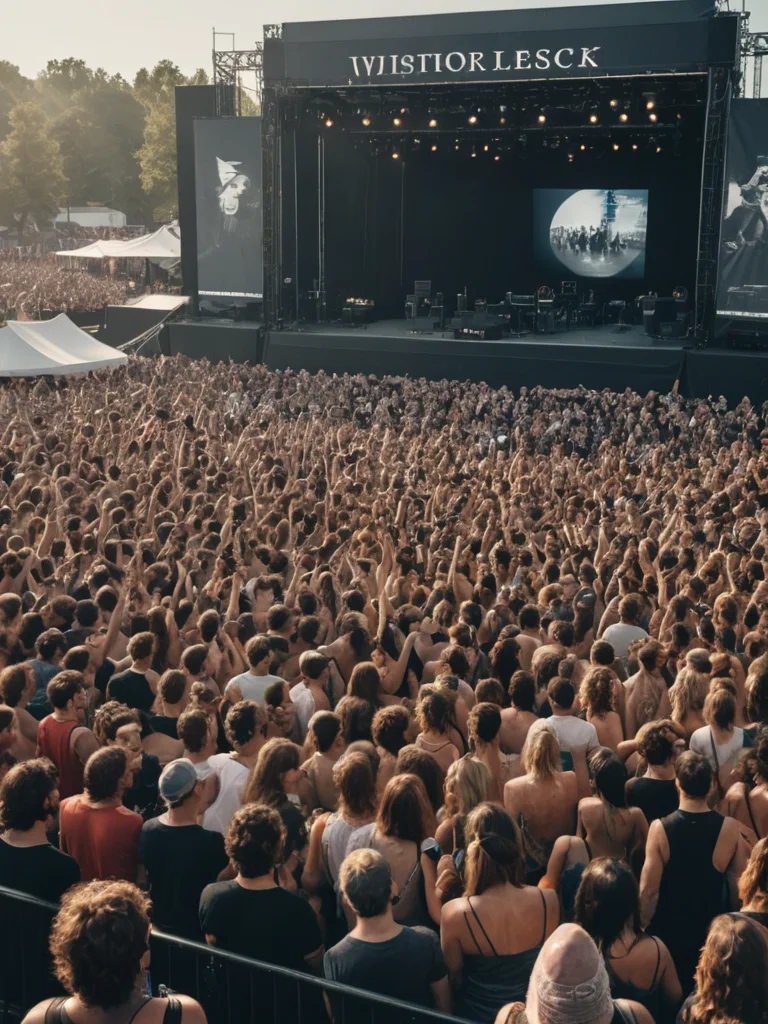
Rock festivals have certainly changed since the days of Woodstock and Monsters of Rock, but the spirit of freedom and unity that has always been inherent in these events is alive and well today. Modern rock festivals have become more diverse and technologically advanced. They offer attendees a wide range of music, entertainment, and services, from camping and food courts to interactive installations and virtual reality. Many festivals have become more environmentally friendly and socially responsible, striving to minimize their impact on the environment and support local communities. You’ve probably noticed that modern festivals are more like complete entertainment complexes than just concerts.
Despite the growing popularity of other genres, rock music remains in demand, and rock festivals continue to attract millions of fans worldwide. Among the most famous and current rock festivals are Download Festival in the UK, Rock am Ring and Rock im Park in Germany, Hellfest in France, and Coachella in the USA (although Coachella is not purely a rock festival, it often features performances by well-known rock bands). These festivals offer a diverse program, including performances by legendary bands as well as new, promising artists. They also attract fans of all ages and nationalities, creating an atmosphere of a global music community. Think about how, despite all the changes in the world, rock music continues to unite people of different cultures and generations.
The history of rock festivals has had a profound impact on the future of rock music. It has shaped fan culture, inspired countless musicians and organizers, and demonstrated that music can be a powerful tool for social and political protest. Modern rock festivals continue to evolve and adapt to new conditions, but they will always carry the spirit of freedom, creativity, and unity that originated at Woodstock and reached its peak at Monsters of Rock. And as long as there are people who love rock music and value freedom, rock festivals will live on and inspire new generations. Thus, it can be said that the legend of rock festivals is alive and will continue to live on, reminding us of the power of music and the importance of freedom of expression.
